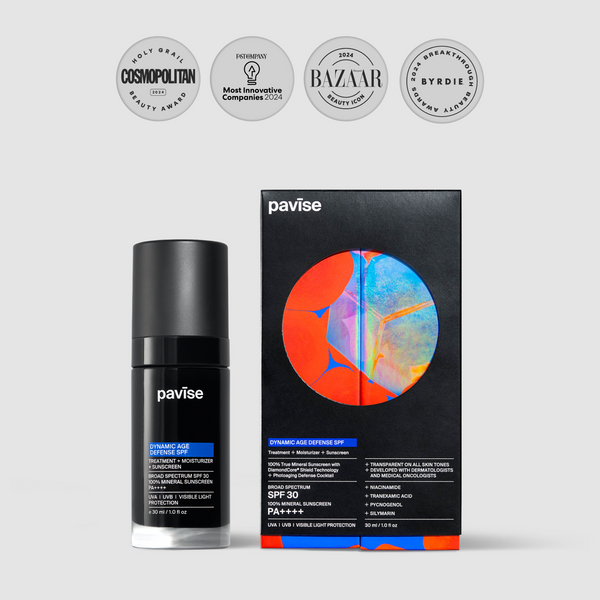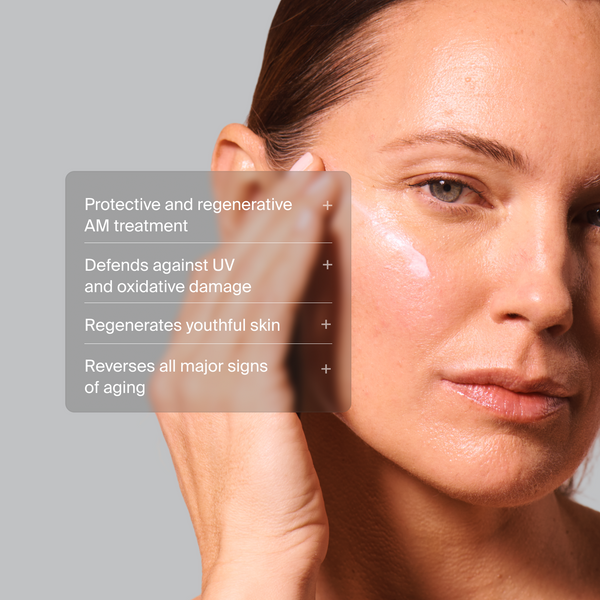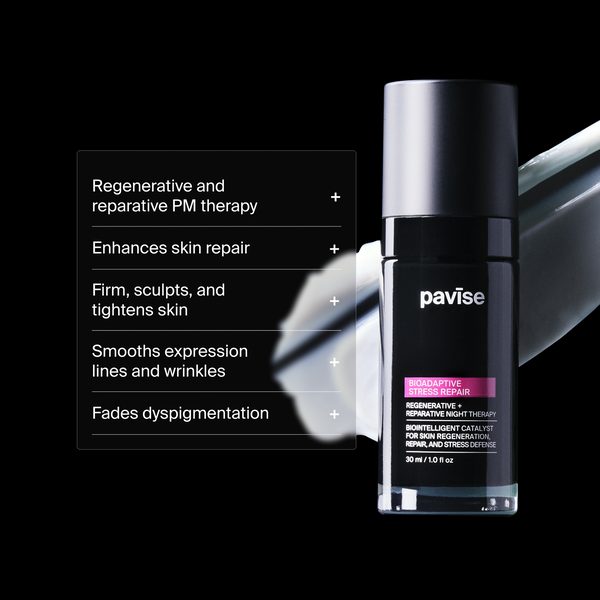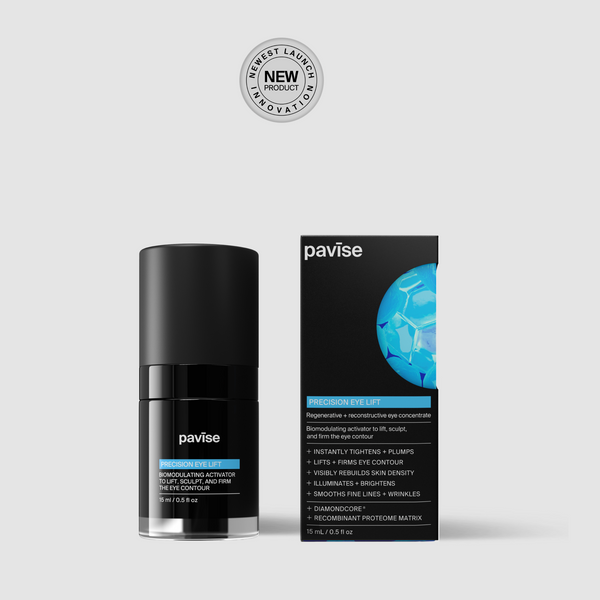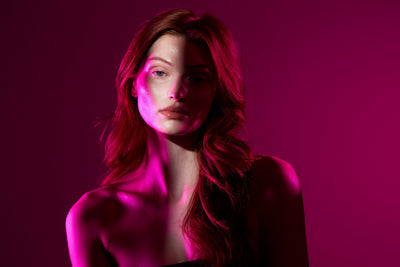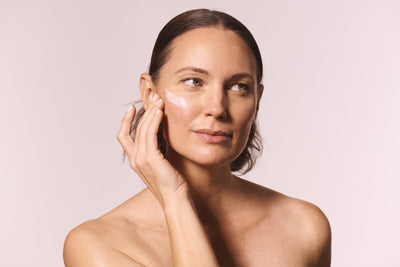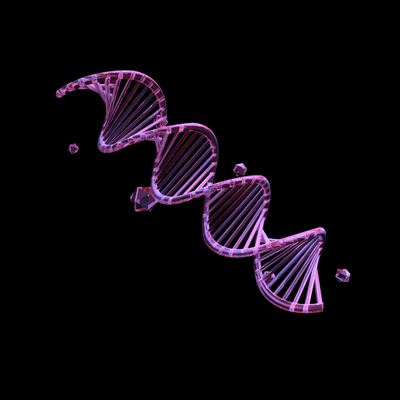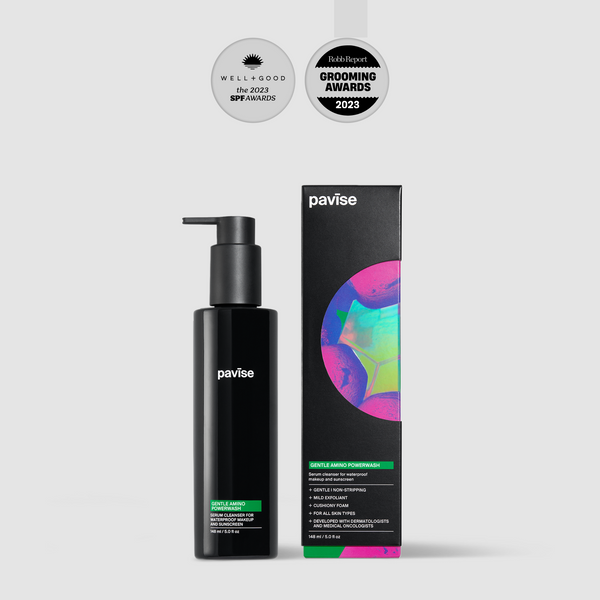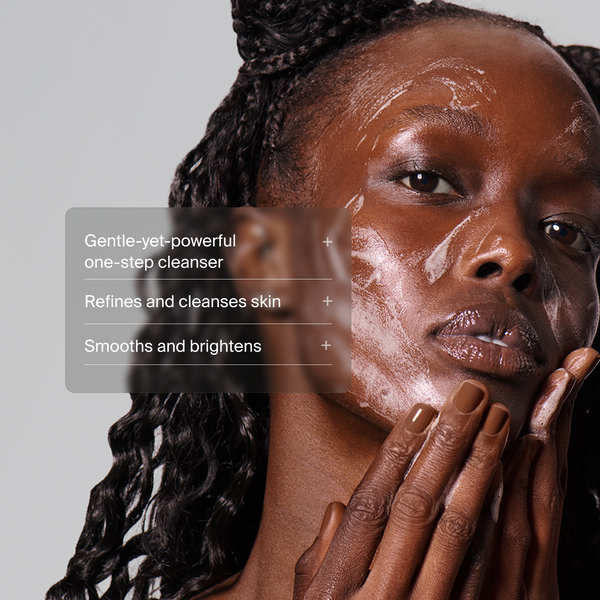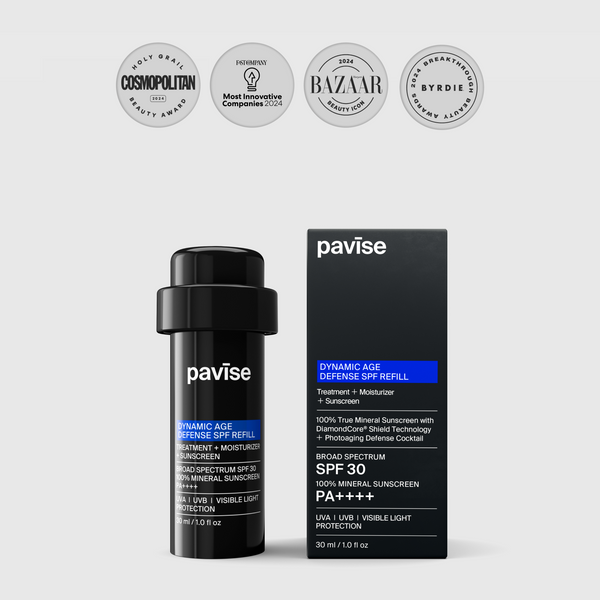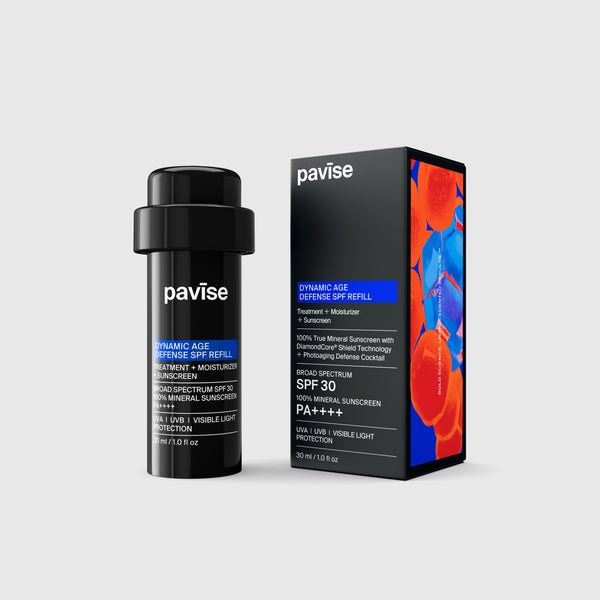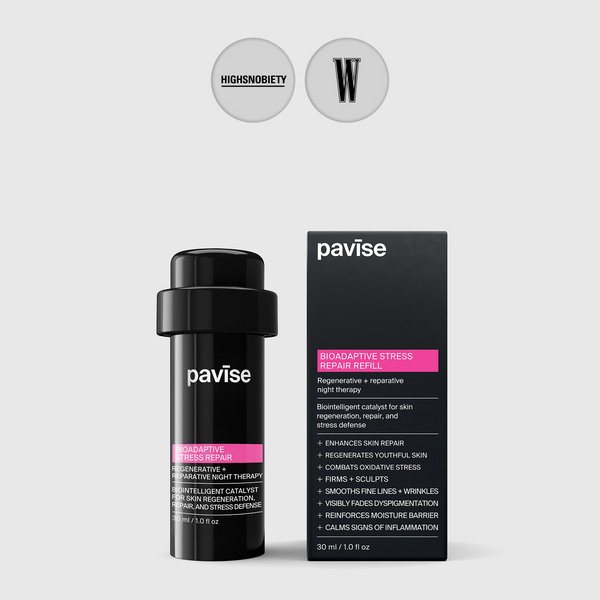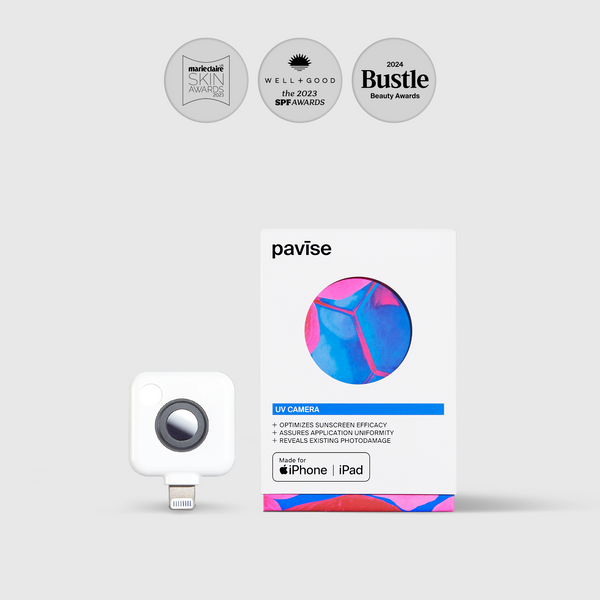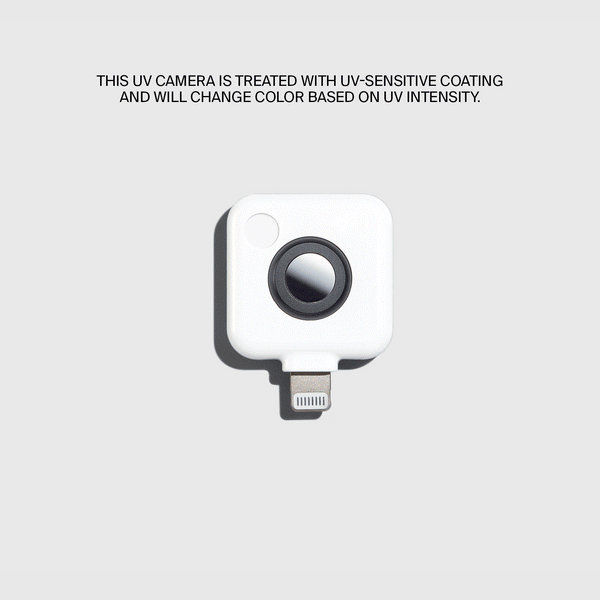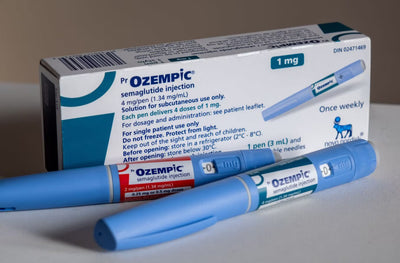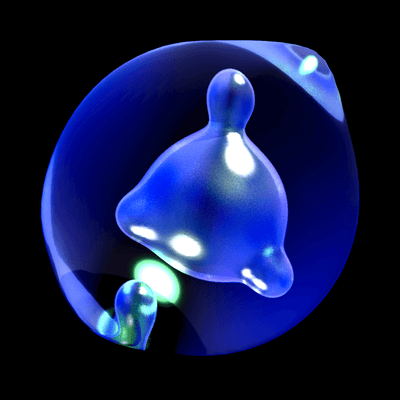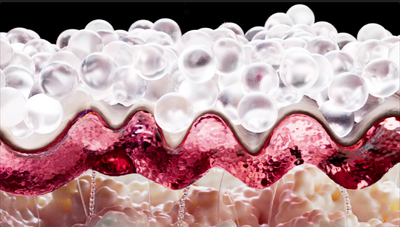WHAT IS PHOTOAGING?

What you need to know
Photoaging refers to skin damage caused by solar radiation, primarily UVA radiation, and is responsible for 90% of visible changes to the skin.
UVB radiation is most responsible for sunburns and has demonstrated the most carcinogenicity.
Because UVA rays penetrate the skin’s dermis and are more abundant, they contribute more seriously to photoaging.
Damage begins to occur after just 15 minutes of unprotected UVA exposure, resulting in fine lines, wrinkles, volume loss, skin sagging, and a more compromised skin barrier.
Pavise is science in defiance of photoaging. Every Pavise solution is designed to provide the most comprehensive and effective defense against photoaging. But why does Pavise care so deeply about photoaging defense? What are the implications of photoaging, and how does it affect skin health? Here, we’ll explain why photoaging defense should be foundational to your skin health regimen and how Pavise can support you.
What is photoaging?
Photoaging refers to skin damage caused by solar radiation, primarily UVA radiation, and is responsible for 90% of visible changes to the skin. That is a significant portion of all skin concerns. Here are just some of the aesthetic skin concerns and skin disorders that photoaging contributes to:6,7
| Aesthetic Skin Concerns | Skin Disorders |
| + Dark spots, sunspots, age spots + Hypopigmentation (white spots) + Fine lines and wrinkles + Volume loss and skin sagging + Chronic facial redness + Rough skin texture + Chronic dryness + Dullness and sallowness + Spider veins or visible veins on face (Telangiectasias) |
+ Post-inflammatory hyperpigmentation (ex. acne scars) + Post-inflammatory erythema + Melasma + Skin cancer + Pre-cancers (actinic keratoses, lentigo maligna, actinic cheilitis) + Eczema + Acne + Rosacea + Perioral dermatitis + Vitiligo + Venous lake |
Photoaging has far-reaching and significant effects. This is because the photoaging mechanisms of action generate numerous toxic byproducts that negatively interact with various cell molecules, compounding their impact on cell processes, as discussed in the following section.
How does photoaging happen?
UVB damage
UVB-related photoaging occurs in the epidermis, or top-most layers of the skin. UVB rays make up 5% of all UV radiation, range from 290-320nm in wavelength, and penetrate the epidermis.6 Learn more about UVB radiation here. UVB radiation is most responsible for sunburns and has demonstrated the most carcinogenicity; UVB rays contribute 3-4X more than UVA rays to skin cancer occurrence.6 UVB produces more immediate inflammation, inciting a flurry of inflammatory markers that cause cell death and change skin cell signaling. UVB rays are also directly absorbed by DNA and most commonly produce pyrimidine dimers, compounds that interfere with DNA base-pairing and consequently cause genetic mutations.1,6 These cell reactions in response to UVB rays result in sunburn, thicker and more leathery skin, and increased skin vascularization. This means that UVB-induced inflammation results in blood vessel formation.7
Blood vessel formation, skin thickening, and general inflammation in the epidermis worsen inflammatory skin conditions like eczema, psoriasis, and acne. Vascularization also plays an integral part in stubborn melasma discoloration and rosacea.
UVA damage
UVA-related photoaging starts deeper in skin’s dermis since UVA rays can penetrate more deeply than UVB rays. UVA rays make up the 95% majority of all UV radiation, range from 320-400nm in wavelength.4,6 Learn more about UVA radiation here. Because UVA rays penetrate the skin’s dermis and are more abundant, they contribute more seriously to photoaging.
The primary mechanism through which UVA radiation contributes to photoaging is via oxidative stress and subsequent inflammation. First, UVA rays interact with chromophores, or pigments, in skin cells such as the melanin in melanocytes. These reactions encourage increased production of melanin via inflammatory cell reactions and produce ROS as byproducts.4 Over time, these chronically activated melanocytes overproduce pigment and produce pigment irregularly, resulting in age spots, freckles, post-inflammatory hyperpigmentation, and actinic keratoses (precancer spots).7
What do the ROS do? ROS interfere with cell signaling pathways, cause DNA damage in the form of single-strand breakages and protein cross-linking, and increase production of matrix metalloproteinases (MMPs).1,4 ROS-activated MMPs cause major destruction to collagen and elastin, both of which provide structural integrity, suppleness, and elasticity to skin.6,7 Via DNA damage, modification of cell signaling, and MMP activation, ROS also interfere with regular collagen and elastin synthesis, so new collagen and elastin is either not produced or produced incorrectly. In one study, decreased collagen synthesis was observed within eight hours of UVA exposure.6 Finally, DNA damage and inflammatory marker release induce a specific kind of skin cell death that has been linked to collagen disorders, inflammatory skin conditions like psoriasis, and skin cancer.
Constant degradation followed by imperfect repair is repeated with every unprotected exposure to UVA, resulting in fine lines, wrinkles, volume loss, skin sagging, and a more compromised skin barrier.7 UVA is also considered one of the main contributors to melasma, post-inflammatory hyperpigmentation, rosacea, acne, vitiligo, and perioral dermatitis, among many others. This damage begins to occur after just 15 minutes of unprotected UVA exposure.6
HEVL and IR damage
Recent research has also illuminated the potential effects of both High Energy Visible Light (HEVL) and Infrared Radiation (IR). HEVL and IR are both longer wavelength forms of light that, like UVA, penetrate skin deeply.2,4,6 Like UVA, HEVL and IR damage is primarily attributed to ROS production and resulting inflammation and MMP activation. As a result, HEVL and IR have also been linked to impaired collagen and elastin production, hyperpigmentation particularly in darker skin tones, and a compromised skin barrier.4 New research has proven that HEVL specifically has the potential to worsen melasma.3,4 Therefore, HEVL and IR should also be considered when protecting against photoaging.
What makes Dynamic Age Defense SPF the ultimate photoaging defense?
Dynamic Age Defense SPF provides 5X better UVA, UVB and HEVL defense than leading sunscreens. Most sunscreens focus on UVB protection, measured via increases in SPF value. Learn more about the different sunscreen protection factors here. As mentioned above, however, UVB is not the main contributor to photoaging. What’s worse, many sunscreens don’t even meet their labeled SPF value. Dynamic Age Defense SPF exceeds our labeled SPF value and provides the most comprehensive and effective protection in the part of the light spectrum that matters most to photoaging—UVA. Dynamic Age Defense SPF is PA++++, the highest possible UVA protection factor rating, which means that it offers the best defense against the 95% of UVA rays that accelerate skin aging. When it comes to preventing and reversing photoaging, the root cause of 90% of all skin aging, it’s important to prioritize shielding skin from the root cause of all major skin concerns rather than attempting to combat individual symptoms via wrinkle serums, etc. Finally, Dynamic Age Defense SPF’s protection extends to HEVL damage, the other major contributor to ROS-induced skin aging. This extent of protection is unparalleled by any other “broad-spectrum” or even PA-rated photoprotective product.
Dynamic Age Defense SPF demonstrates incomparable ROS eradication. While most UV filters and sunscreens attempt to shield from UV radiation, their reactions to UV light can produce ROS as a byproduct. This may not be the best photoaging defense solution; the UV filter-generated ROS can also lead to inflammatory responses that further contribute to skin aging. Dynamic Age Defense SPF’s active ingredient DiamondCore® zinc oxide is uniquely photostable, and the unique Core-Shell structure is precisely engineered to trap and neutralize UV-generated ROS. In fact, DiamondCore® eradicates 80% of ROS on its own. It is the only UV filter available that demonstrates this ability.
Added antioxidants like silymarin, astaxanthin, and Pycnogenol® provide additional ROS-scavenging capacity. These antioxidants compound the anti-ROS effects of DiamondCore® zinc oxide, leaving skin entirely protected from UV-induced oxidative stress damage.
Finally, additional bioactive ingredients like niacinamide, tranexamic acid, licorice root extract, and squalane combat other major signs of photoaging. Niacinamide, a potent multitasker, promotes healthy mitochondrial oxidative phosphorylation, combats oxidative stress, regulates sebum production, and calms redness. Tranexamic acid and licorice root extract effectively fade discoloration, while squalane reinforces a compromised skin barrier and regulates sebum production.
Dynamic Age Defense SPF defends holistically against key photoaging factors and reverses all existing signs of damage in a single, photoprotective step. Its far-reaching and full-package benefits make it the foundation of a great skin health routine, delivering safe, effective, and luxurious photoaging defense like no other solution available.
References:
- D’Orazio, John, et al. “UV Radiation and the Skin.” International Journal of Molecular Sciences, vol. 14, no. 6, 7 June 2013, pp. 12222–12248, www.ncbi.nlm.nih.gov/pmc/articles/PMC3709783/, https://doi.org/10.3390/ijms140612222.
- Grether-Beck, Susanne, et al. “Photoprotection of Human Skin beyond Ultraviolet Radiation.” Photodermatology, Photoimmunology & Photomedicine, vol. 30, no. 2-3, 19 Feb. 2014, pp. 167–174, https://doi.org/10.1111/phpp.12111. Accessed 16 Apr. 2019.
- Halliday, Gary M., et al. “Ultraviolet a Radiation: Its Role in Immunosuppression and Carcinogenesis.” Seminars in Cutaneous Medicine and Surgery, vol. 30, no. 4, Dec. 2011, pp. 214–221, https://doi.org/10.1016/j.sder.2011.08.002. Accessed 2 Mar. 2023.
- Karran, Peter, and Reto Brem. “Protein Oxidation, UVA and Human DNA Repair.” DNA Repair, vol. 44, Aug. 2016, pp. 178–185, https://doi.org/10.1016/j.dnarep.2016.05.024. Accessed 23 Jan. 2020.
- Nakai, Kozo, and Daisuke Tsuruta. “What Are Reactive Oxygen Species, Free Radicals, and Oxidative Stress in Skin Diseases?” International Journal of Molecular Sciences, vol. 22, no. 19, 6 Oct. 2021, p. 10799, https://doi.org/10.3390/ijms221910799.
- Pandel, Ruža, et al. “Skin Photoaging and the Role of Antioxidants in Its Prevention.” ISRN Dermatology, vol. 2013, 2013, pp. 1–11, https://doi.org/10.1155/2013/930164.
- Rittie, L., and G. J. Fisher. “Natural and Sun-Induced Aging of Human Skin.” Cold Spring Harbor Perspectives in Medicine, vol. 5, no. 1, 1 Jan. 2015, pp. a015370–a015370, https://doi.org/10.1101/cshperspect.a015370.
By Claudia Teng - Updated September 07, 2023
